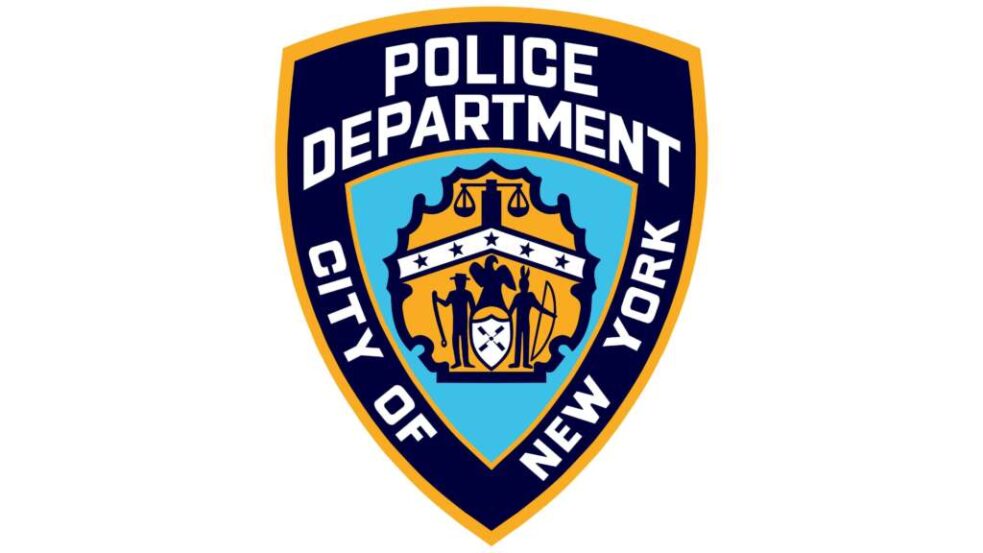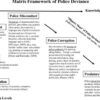Follow
Police Deviance Within, Sociology 450 Term Paper, 15 May 1997
Police Deviance Within
Analyzing Internal Misconduct and Systemic Issues in the NYPD
The following analysis examines incidents of violence and discrimination within the New York City Police Department (NYPD). All names have been altered to preserve confidentiality, ensuring unbiased adjudication. These events in 1996 and 1997 reveal deviant behavior patterns among officers and highlight systemic shortcomings in addressing such acts. This discussion draws on sociological perspectives to explore the causes and implications of deviance within the NYPD and offers solutions for reform.
Case Study 1: Threats and Intimidation
On January 24, 1997, Officer Black (a Black female) reported an incident involving Officer White (a White female), citing explicit threats of violence. The conflict arose when Officer Black refused to share a confidential document with Officer White. Following a heated exchange, Officer White reportedly threatened to harm Officer Black, saying, “Lucky for you, I almost turned in my gun and shield to Inspections so I can kick your [expletive] ass. Anytime, anywhere, [expletive].” Subsequently, Officer White allegedly contacted the Inspections Unit, stating, “Come and take my gun before I shoot the [expletive].”
Despite the presence of witnesses and the severity of the threats, supervisory personnel and the Inspection Unit failed to take appropriate action. Officer Black’s detailed memo to her Integrity Control Officer (ICO) and the Internal Affairs Bureau (IAB) highlighted these failures, underscoring a lack of accountability. The incident revealed how institutional biases and pressures from senior leadership might prioritize protecting reputations over ensuring justice and safety.
Case Study 2: Physical Altercation and Racial Disparities
On December 21, 1996, a physical altercation occurred between two officers—Officer Black (a Black male) and Officer White (a White male)—following a discourteous act. Officer Black’s actions were deemed an assault, leading to suspension without pay, charges of excessive force, and a one-year probationary period after serving a 30-day suspension.
In contrast, Officer White faced only minor accusations of unprofessional conduct, which were dismissed. The stark discrepancy in disciplinary outcomes points to racial disparities in the department’s handling of misconduct. Supervisors and the Police Benevolent Association (PBA) representatives appeared to favor Officer White, reinforcing perceptions of racial bias and unequal application of departmental policies.
Sociological Perspectives on Police Deviance
Learning Perspective
The Learning Perspective posits that deviance is a learned behavior shaped by social interactions. Gabriel Tarde’s theories emphasize how individuals imitate behaviors observed in their immediate environment, particularly from those in positions of authority.
- Imitation of Superiors: Officer White’s threats and outbursts may reflect behaviors normalized within her unit. Prolonged exposure to deviant colleagues and supervisors likely reinforced these actions as acceptable.
- Differential Association: Officer White’s conduct suggests a learned pattern of aggression stemming from her interactions within a culture that tolerates or encourages such behavior.
This perspective highlights the need for interventions targeting the organizational culture of police units to discourage deviant behaviors.
Societal Reaction Perspective
The Societal Reaction Perspective, including Labeling Theory, focuses on how society’s responses define and reinforce deviance. Key elements include:
- Labeling Bias: Officer White’s actions were not labeled as deviant by her supervisors, while Officer Black faced harsh penalties. This discrepancy reflects systemic biases and reinforces patterns of discrimination.
- Symbolic Interactionism: Supervisors’ interpretations of the incidents appeared influenced by racial dynamics rather than objective behavior evaluations. This selective application of labels perpetuates a culture of inequality and undermines trust within the department.
Primary and Secondary Deviance
Edwin Lemert’s concepts of primary and secondary deviance provide further insights:
- Primary Deviance: Officer White’s initial threats were clear violations of professional standards.
- Secondary Deviance: The department’s failure to address these actions effectively normalized her behavior, allowing deviance to persist and escalate.
Recommendations for Reform
To address these systemic issues, the NYPD must implement the following reforms:
- Enhanced Hiring Standards:
- A minimum associate degree or military service and a high school diploma are required.
- Introduce comprehensive psychological evaluations focusing on emotional intelligence and conflict resolution.
- Accountability and Transparency:
- Enforce strict adherence to policies regarding misconduct investigations.
- Establish independent oversight committees to review allegations of officer deviance.
- Bias Training and Cultural Reform:
- Conduct mandatory training on unconscious bias and racial equity.
- Foster a culture of accountability where all officers, regardless of rank or race, are held to the same standards.
- Preventive Learning Programs:
- Implement mentorship initiatives pairing new recruits with exemplary officers to instill professional values.
- Incorporate role-playing scenarios in academy training to address conflict resolution without resorting to aggression.
Conclusion
The NYPD’s failure to address deviance among its ranks undermines its mission to serve and protect. Sociological theories provide a framework for understanding these behaviors and their broader implications. The department can rebuild trust with its officers and the communities they serve by addressing biases, enforcing accountability, and fostering a culture of integrity.
Ultimately, these reforms ensure that the NYPD leads by example, upholding justice and equality for all.













